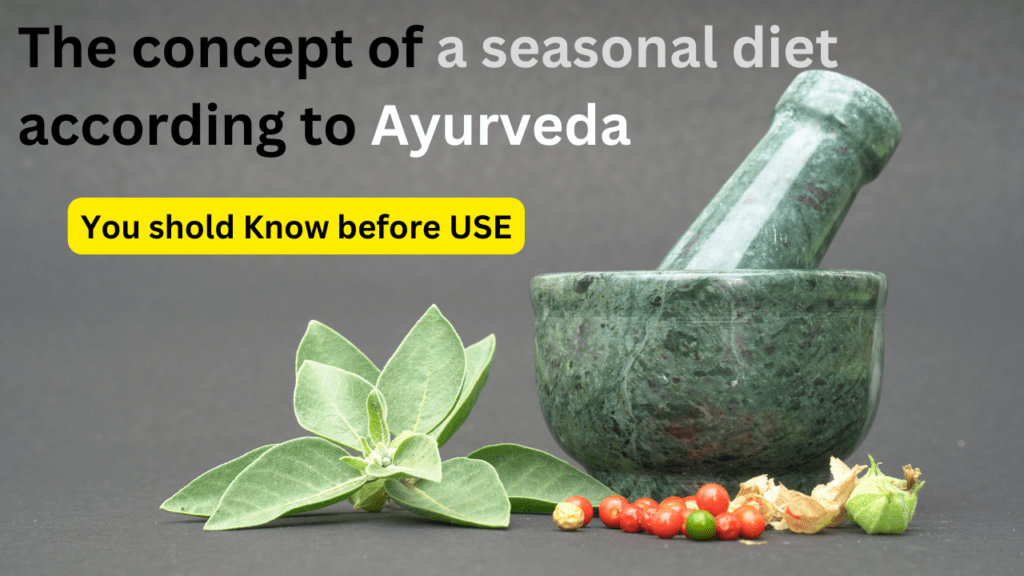Here you will understand about “concept of seasonal diet according to Ayurveda in India”.
Ayurveda, the traditional system of medicine that originated in ancient India, emphasizes the importance of maintaining balance in the body and mind for optimal health.
One aspect of Ayurveda is the concept of a seasonal diet, which suggests that dietary choices should be adapted to the changing seasons to maintain balance with the external environment.
The seasonal diet in Ayurveda is based on the principles of the doshas (Vata, Pitta, and Kapha) and the qualities associated with different seasons.
Here’s the explanation of the concept of a seasonal diet according to Ayurveda.
Vata Season (Late Autumn and Early Winter)
- Qualities: Cold, dry, windy.
- Dietary Recommendations: Warm, nourishing, and grounding foods. Include cooked vegetables, grains (especially rice and oats), warm soups, and stews. Opt for warming spices like ginger, cinnamon, and cumin. Hydrate with warm drinks.
Pitta Season (Summer)
- Qualities: Hot, intense, sharp.
- Dietary Recommendations: Cooling and hydrating foods. Include sweet and bitter tastes. Consume a variety of fresh, ripe fruits, vegetables (cucumbers, leafy greens), and dairy products. Avoid overly spicy and heated foods.
Kapha Season (Late Winter and Spring)
- Qualities: Cold, damp, heavy.
- Dietary Recommendations: Light and warming foods. Include pungent, bitter, and astringent tastes. Opt for foods like legumes, leafy greens, and spicy foods. Minimize heavy and oily foods. Stay hydrated with warm herbal teas.
Transition Seasons (Early Autumn and Late Spring)
During the transitional periods between seasons, it’s advisable to include a variety of foods that balance the qualities of the outgoing and incoming seasons. This helps the body adjust to the changing climate.
